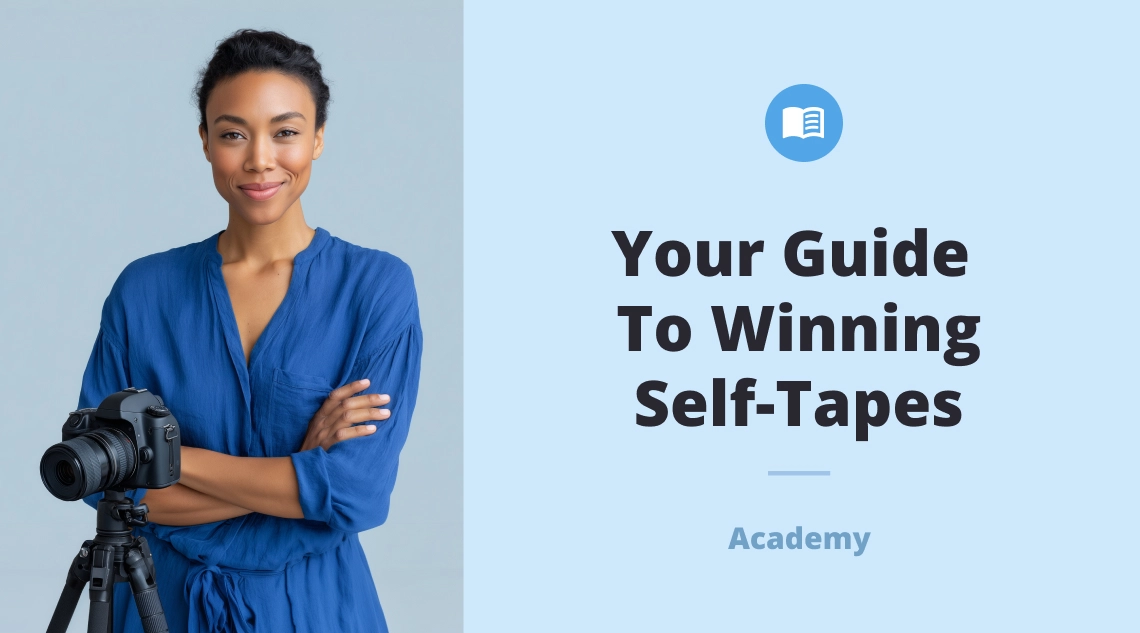Quick Summary
Self-tapes are now a critical part of the casting process for actors and models. Here's what you need to deliver high-quality, professional-looking submissions:
- Use a Camera That Captures Crisp Detail
Smartphone cameras can work, but dedicated video cameras offer better control over focus, lighting, and resolution—ideal for performance close-ups. - Record with Clear, Controlled Audio
Built-in microphones are fine for beginners, but external mics like clip-on or shotgun models capture voice nuances and reduce background noise. - Prioritize Good Lighting Setup
Natural light may not always be reliable. Use ring lights or softboxes to evenly illuminate your face and avoid harsh shadows or poor visibility. - Match Equipment to Casting Requirements
Tailor your tech setup to the casting call’s demands—some may need expressive facial detail, others full-body framing or precise voice capture. - Present Professionalism Through Quality
Strong self-tape quality signals commitment and preparation—don’t let weak visuals or audio distract from your actual talent.
What Camera Should You Use for Self-Tape Auditions?
This is an obvious necessity since self-tape means models and actors have to create footage of themselves performing their audition bit. Initial self-taping attempts can easily be done with the majority of today’s smartphones as their quality is high enough for such productions, so aspiring actors or models can at least delay investments in more professional equipment. Similarly, self-taping can also potentially be done with a computer's webcam, which makes sense also from the point of view that a webcam would also capture auditions in a live video call with the casting director.
With that said, actual camera video resolution quality is by far better than in the average smartphone or computer. Besides the quality, dedicated cameras also allow more control over filming, including adjusting exposure, focus, and frame rate settings as necessary for actors' individual self-taping needs. Those needs may be varied, including related to the home environment the self-tape process takes place, or casting-specific requirements, such as extra focus on the facial expressions.
Ultimately, the camera choice is up for each individual case of an actor or model. Most important thing is that the device used can capture the pre-recorded audition performance in a high enough quality, as a poor one may distract casting directors' attention from it, as well as raise doubts about the performer's commitment to the overall process.
How Important Is Audio Quality in Self-Tape Submissions?
While there may be auditions where sound is not necessary, especially when it comes to modeling, it is still best to be reasonably prepared not only visually but audio-wise too.
Same as previously described when it comes to cameras, performers can also consider using microphones built in their smart devices, such as phones, computers, or tablets. Besides being cost effective, especially for aspiring actors and models who are not yet sure about the amount of investing they are ready to make, it is also a convenient and portable way that won’t require much prior preparations. Though, if the audition performance includes a more significant vocal skill showcase, there are risks that a more nuanced voice delivery might not get recorded clearly enough for casting directors to take notice.
That is where an external microphone can get the job done better, by capturing vocal delivery and any changes within voice performance effectively and with a significantly improved quality. An external microphone, like a clip-on microphone or a shotgun microphone, also allows for more control over how it records sounds, for example, adjusting the volume of recording. Besides that, such microphones can also reduce external background noises, helping to deliver a clear audio where the focus can remain with the performance.
How Can Lighting Improve Your Self-Tape Audition Video?
Even if the camera is all set, poor lighting can still significantly affect how visible the model or actor is on video, making it hard for casting directors to assess the respective candidate. While natural lighting is a good option, indirect sunlight simply might not be available during the given period of self-taping, and even then there are risks of backlighting.
This is why it is probably worth considering investing in artificial lighting. Well lit self-tape will provide a crisp visibility of the modeling or acting performance, capturing even the smallest details of it, ultimately helping the ultimate goal of delivering a strong impression on the casting staff.
Professional lighting devices also give the auditioning performer control over how the final recorded footage will look, including reducing the shadows, or separating the performer from the background. It comes especially in handy when trying to highlight specific features, which can be important when it comes to modeling, or even setting a specific mood that enhances the audition performance by matching the tone of the expected delivery.




